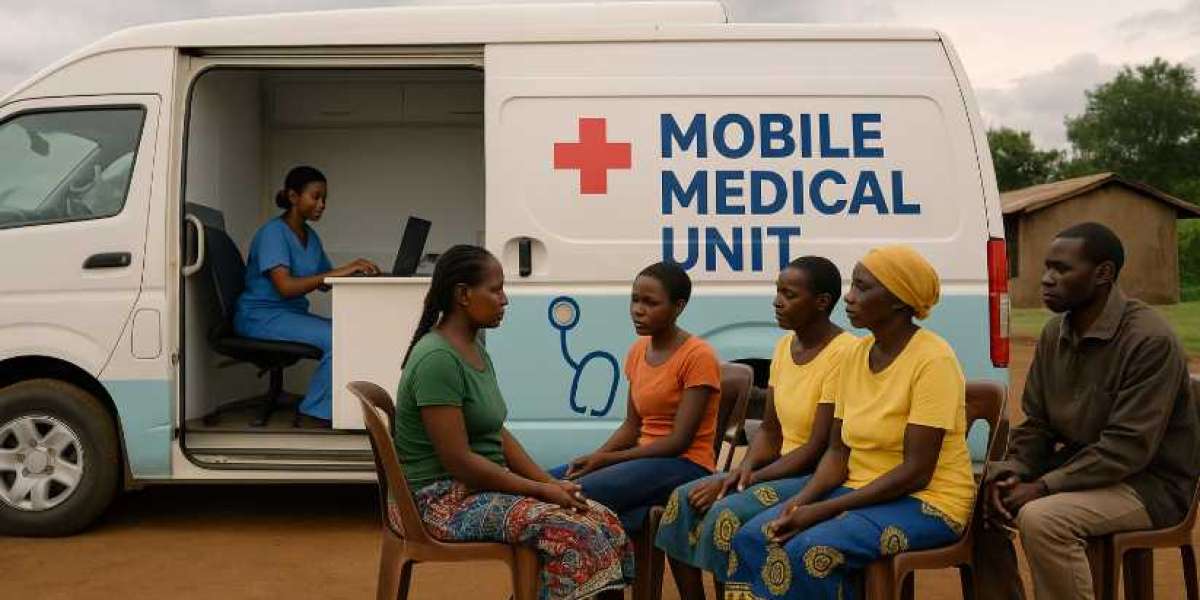In a country where thousands of people live far from any form of brick-and-mortar clinic, mobile health units are not just a supplement to Kenya’s healthcare system — they are a lifeline. Over the last few years, these clinics on wheels have grown from isolated pilot efforts into a broader movement that is quietly reshaping primary and preventive care access across Kenya.
Now, for the first time, consolidated program data from mobile health initiatives across five counties—Bungoma, Migori, Eldoret, Meru, and Kikuyu—is revealing the scale of what’s been achieved. Supported by hospital networks affiliated with Jayesh Saini, these mobile efforts offer critical insights into what it takes to reach remote populations with real, measurable outcomes.
The Challenge: A Population Beyond Reach
Kenya’s remote communities are often invisible to national healthcare planning—not due to neglect, but geography. Many villages are hours from the nearest health facility, and in regions like Mt. Elgon (Bungoma) or rural Meru, terrain and transport make access even harder during rainy seasons.
Key healthcare gaps in these areas include:
- Missed child immunizations
- Undiagnosed chronic conditions (diabetes, hypertension)
- Lack of antenatal and postnatal care
- No continuity for patients with long-term illnesses
Community health volunteers (CHVs) have historically bridged this gap, but limited clinical training and tools restrict the scope of what they can deliver.
The Approach: A Hub-and-Spoke Mobile Model
To meet these rural care gaps, Jayesh Saini’s hospital networks including Lifecare and Bliss deployed a structured mobile health model. Each van operates as a mobile extension of a fixed hospital or outpatient center, rotating through hard-to-reach zones on a planned schedule.
Features of this system include:
- EMR-linked patient registration
- Basic diagnostics (blood sugar, BP, malaria, HIV)
- Maternal services (antenatal checkups, supplements, counseling)
- Vaccination storage and delivery
- On-demand teleconsultations routed to specialists at hub locations
Importantly, each deployment cycle is paired with CHV coordination, allowing clinics to focus efforts where needs are highest.
The Metrics: 5 Counties, Real Numbers
From 2022 through early 2024, internal monitoring across five counties showed consistent impact across multiple metrics:
1. Patient Reach
Across the five counties, internal performance tracking shows that mobile clinics reached an average of 1,800–2,200 patients per month per county, with higher turnout during school holidays and market days.
- Migori Bungoma accounted for the highest volumes, attributed to their larger rural populations.
- Kikuyu showed the highest proportion of returning patients, indicating growing trust and care continuity.
2. Immunization Coverage
Childhood vaccine outreach was one of the standout gains:
- DPT, polio, and measles vaccinations were consistently administered during scheduled visits.
- Partnerships with county health departments enabled data sharing to avoid duplication and improve tracking.
In regions like Meru, mobile units helped push immunization coverage past the 85% threshold in several sub-counties—previously below 60% before the program’s rollout.
3. Chronic Disease Screening
Targeted NCD (Non-Communicable Disease) screening was introduced across all mobile units, focused on:
- Blood pressure
- Blood glucose
- Weight/BMI
- Lifestyle counseling
While full national comparisons are pending, early data showed that nearly 25% of adults screened in Bungoma and Eldoret were flagged for hypertension risk, prompting follow-up care referrals.
4. Maternal Health Engagement
With support from Jayesh Saini’s clinical strategy teams, mobile units focused heavily on ANC (Antenatal Care) in partnership with CHVs. In just six months:
- Over 2,500 pregnant women were reached across the five counties.
- Supplement distribution and early gestation detection rates increased significantly.
- Maternal education sessions now run regularly on topics like safe delivery and infant care.
Operational Innovations Behind the Results
Several infrastructure and process innovations made these results possible:
- Route Mapping Tools: Digital tools helped optimize travel schedules based on population density, disease trends, and weather forecasts.
- Cold Chain Systems: Refrigerated compartments allowed safe delivery of vaccines and insulin.
● Real-Time Data Upload: Each unit was equipped with 4G-connected tablets to sync patient records with base hospitals. - Feedback Loops: Community leaders and patients were surveyed monthly to adjust service offerings based on demand.
These are not tech experiments for show — they represent a repeatable and scalable model for delivering basic care where it’s most needed.
Lessons from the Field
Field teams shared key qualitative takeaways that support the quantitative success:
- Trust grows with consistency: Vans that return regularly see higher engagement from residents.
- CHVs are force multipliers: Their local credibility helps overcome cultural and logistical resistance.
- Hybrid care works: Combining telemedicine with in-person vitals and physical exams bridges gaps better than either method alone.
Conclusion: From Experiment to Embedded Service
As Kenya eyes Universal Health Coverage (UHC) and regional equity, mobile clinics may be one of its most efficient tools. With support from leaders like Jayesh Saini, who have invested in not just equipment but ecosystem design, these clinics are proving that low-barrier, tech-enabled outreach can change rural healthcare outcomes permanently.
The model is no longer experimental — it is operational, measurable, and ready for scale.











